The basics of puppy grooming
Ensuring your puppy is used to being handled from a young age will make grooming easier for the rest of its life. Each dog breed has unique grooming needs and understanding that is key to maintaining your dogs healthy coat.
It's a good idea to get puppies used to being handled from an early age. If a dog is carefully introduced to grooming from puppyhood, the experience will be less stressful for them, and calmer for you in the future, allowing for you to meet their care needs easily.
Coat care tools
Rubber brush
Used to loosen dead skin and hair from close-cropped coats
Slicker brush
Works against the coat to loosen debris and strips excess hair from the undercoat. Great for grooming curly and coarse coats
Pin brush
Used to gently untangle knots or mats, which are particularly common in long or silky coats
Bristle brush
Used to remove debris from a dog's coat after brushing
Wide-tooth comb
A more gentle tool that can be used on tails and paws
Stripping knife
Used for stripping coarse-haired dogs four or five times a year. This tool is best used by a professional groomer
Hygiene tools
Nail clippers
Specialist nail clippers for dogs are designed to help you trim your puppy's nails without causing any harm
Toothbrush and toothpaste
Human toothpaste is not suitable for puppies or adult dogs, so it's best to use specially made dog toothpaste
Dog shampoo
Dogs have sensitive skin, and their pH balance is different to that of humans, so specialist dog shampoo is required for skin and coat health

Nutrition and coat care
A dog's coat is a strong reflection of their diet. A shiny, soft coat and healthy skin is an indication that your puppy's food is enriched with Omega 3 and 6 amino acids. On the other hand, a diet lacking in the appropriate nutrition can result in a dull, limp coat. A tailored nutritional diet is the first step to caring for your puppy's coat.
How to care for your puppy's coat
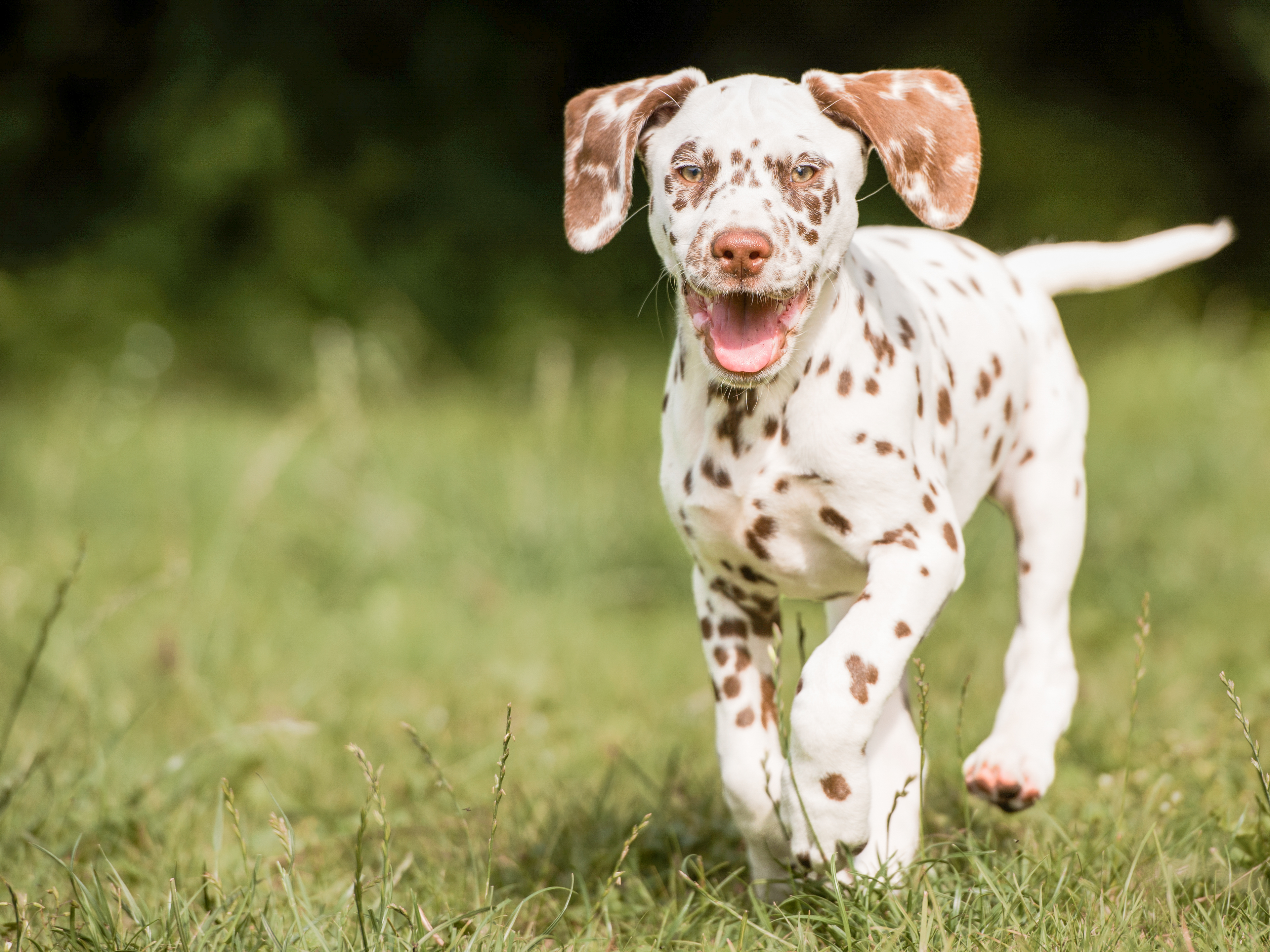
Close-cropped hair
While breeds with close-cropped hair, such as Dalmatians, German Shorthaired Pointers and Great Danes don't require regular grooming, they do need to be brushed once or twice a week. Dead skin and hair is loosened by brushing against the hair with a rubber brush. The debris can then be removed by using a bristle brush in the direction of the hair to prevent irritation.
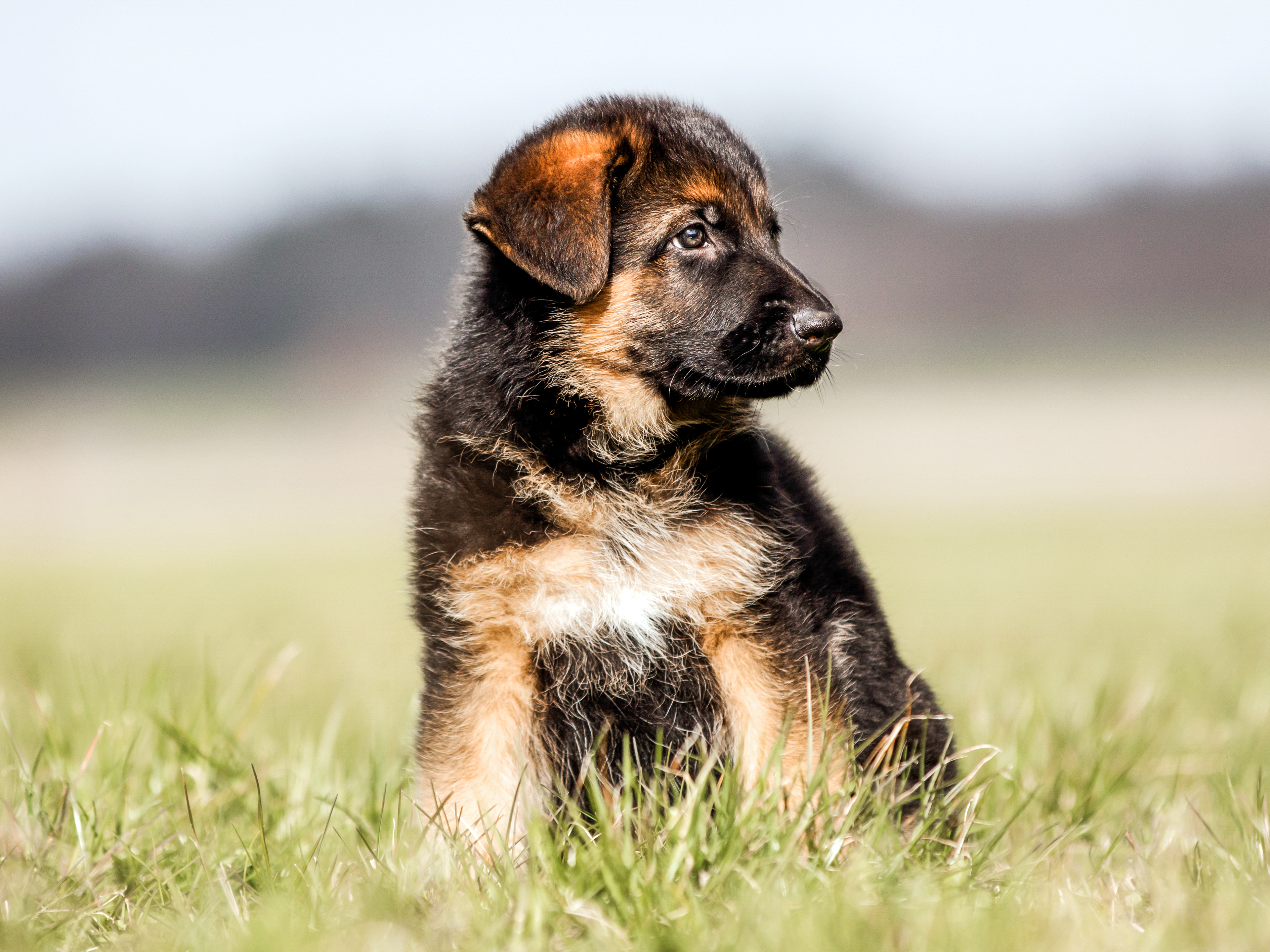
Short-medium hair
Breeds with short to medium hair include Golden Retrievers, German Shepherds and Boarder Collies. These breeds should be brushed every other day due to the density of the coat, which may include both a top and undercoat.
Use a slicker brush against the direction of the coat to loosen as much dead hair and skin as possible and strip the undercoat. A bristle brush can then be used in the direction of the hair to remove this debris.
A wide-tooth comb can be used on the tail and paws to gently remove debris and tangles.
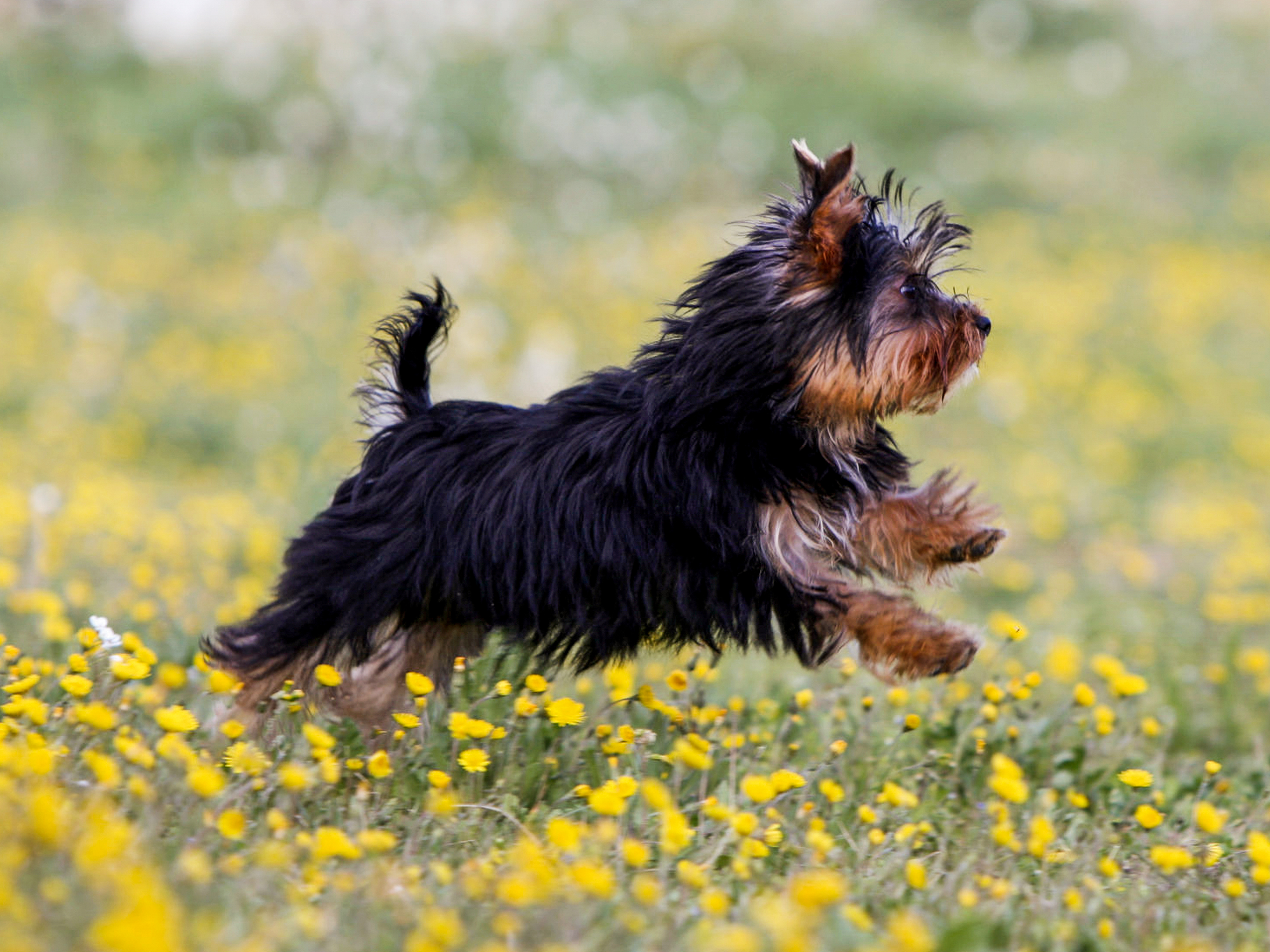
Long hair
Although beautiful, long-haired coats require daily brushing. This can take up to an hour a day for an adult Afghan Hounds, for example. Use a slicker brush, working in the direction of the hair, to loosen knots and mats. Because the hair is so long, this may pull the skin, so this should be done gently.
Using a bristle brush on breeds with silky coats, like Yorkshire Terriers, will add sheen. A wire brush can be used to remove impurities from the breeds with a thick undercoat, like Rough Collies.
A wide-tooth comb can be used to untangle hair under their chest and legs. The hair can be trimmed to equal length with scissors, which can also be used to remove hairs that are most likely to form knots or attract foreign bodies.

Coarse hair
The coat of coarse-haired breeds, such as Irish Terriers and Schnauzers, needs to be stripped four to five times a year. This can be done with a stripping knife by trapping dead hairs between the knife and thumb. This is not at all painful for the dog if done properly, speak to a professional before attempting this grooming technique.
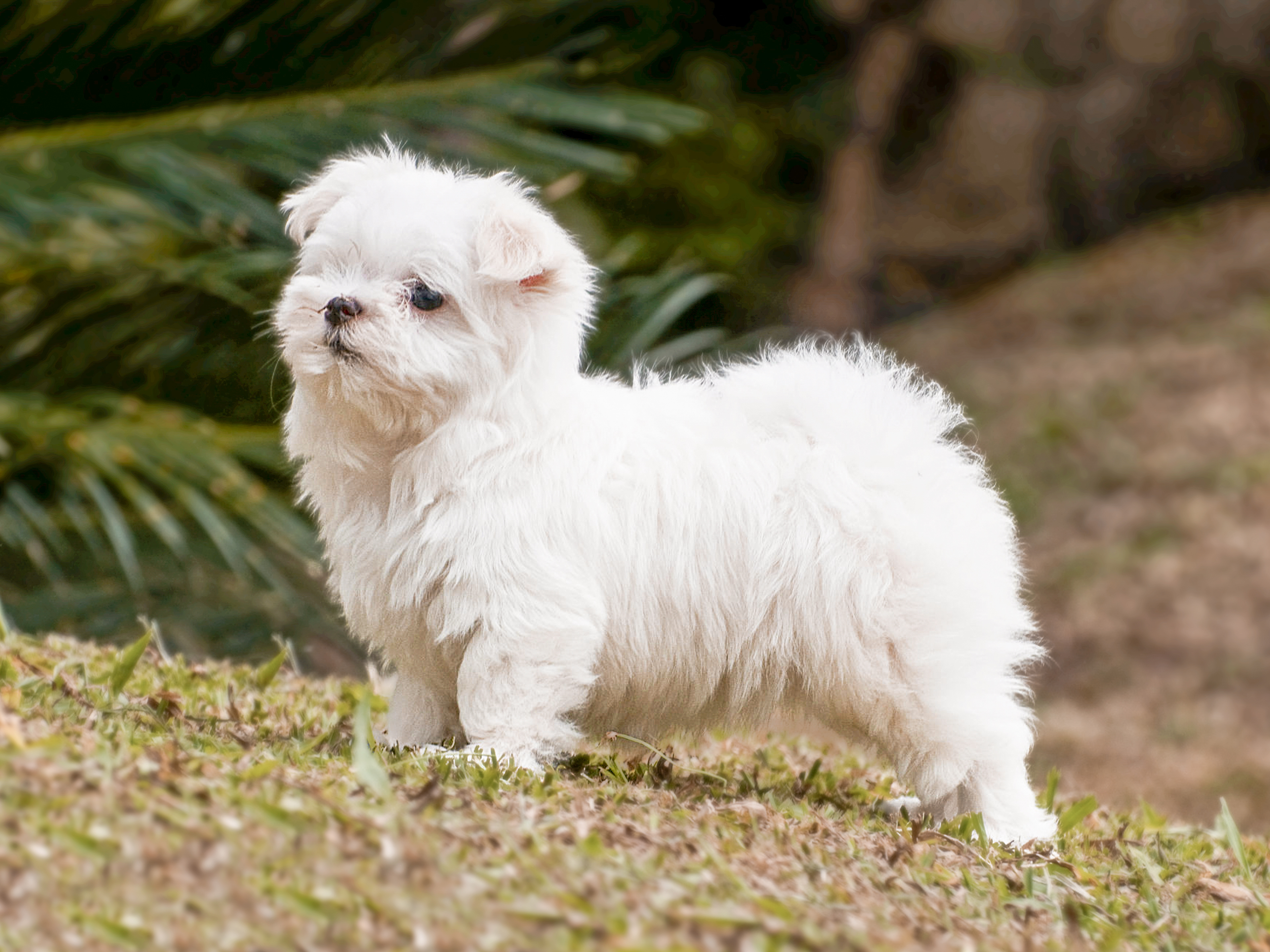
Curly hair
Poodles, Bichon Frise and other curly haired breeds have very different coat care needs to others. While they are known to shed less, often making them hypoallergenic, their coats are more prone to mats and therefore require brushing daily.
Using a slicker brush, gently remove any debris and comb out tangles across the whole body. Pay close attention to their legs, paws and undersides to remove any foreign bodies which could have been collected during walks.

Close-cropped hair
While breeds with close-cropped hair, such as Dalmatians, German Shorthaired Pointers and Great Danes don't require regular grooming, they do need to be brushed once or twice a week. Dead skin and hair is loosened by brushing against the hair with a rubber brush. The debris can then be removed by using a bristle brush in the direction of the hair to prevent irritation.

Short-medium hair
Breeds with short to medium hair include Golden Retrievers, German Shepherds and Boarder Collies. These breeds should be brushed every other day due to the density of the coat, which may include both a top and undercoat.
Use a slicker brush against the direction of the coat to loosen as much dead hair and skin as possible and strip the undercoat. A bristle brush can then be used in the direction of the hair to remove this debris.
A wide-tooth comb can be used on the tail and paws to gently remove debris and tangles.

Long hair
Although beautiful, long-haired coats require daily brushing. This can take up to an hour a day for an adult Afghan Hounds, for example. Use a slicker brush, working in the direction of the hair, to loosen knots and mats. Because the hair is so long, this may pull the skin, so this should be done gently.
Using a bristle brush on breeds with silky coats, like Yorkshire Terriers, will add sheen. A wire brush can be used to remove impurities from the breeds with a thick undercoat, like Rough Collies.
A wide-tooth comb can be used to untangle hair under their chest and legs. The hair can be trimmed to equal length with scissors, which can also be used to remove hairs that are most likely to form knots or attract foreign bodies.

Coarse hair
The coat of coarse-haired breeds, such as Irish Terriers and Schnauzers, needs to be stripped four to five times a year. This can be done with a stripping knife by trapping dead hairs between the knife and thumb. This is not at all painful for the dog if done properly, speak to a professional before attempting this grooming technique.

Curly hair
Poodles, Bichon Frise and other curly haired breeds have very different coat care needs to others. While they are known to shed less, often making them hypoallergenic, their coats are more prone to mats and therefore require brushing daily.
Using a slicker brush, gently remove any debris and comb out tangles across the whole body. Pay close attention to their legs, paws and undersides to remove any foreign bodies which could have been collected during walks.
Giving your puppy a bath
When to bathe a puppy
It is important to note that you shouldn't bath your puppy too often, as this can cause an imbalance in their skin's natural pH and dry out their coat. As they grow, only bath your puppy when necessary.
How to bathe a puppy
- Let your puppy become accustomed to the bath without any water, allow them to sniff the area and praise them as they do so
- Run the bath with lukewarm water to avoid any burns and gradually introduce the puppy again
- Wet the coat all over and apply the specialist puppy shampoo, making sure to be careful around the eyes
- Continue to praise and reassure your puppy through the whole process
- Rinse thoroughly with plenty of water, leaving the head until last to avoid shaking
How to dry a puppy's coat
After the bath, rub your puppy down vigorously with a towel and keep it in a warm room until it’s properly dry. In the summer, the alternative is patting a puppy down in the garden or taking it for a walk, as long as they don't like rolling in mud.
A hairdryer may be recommended with curly-coated dogs, but care should be taken not to burn the dog and the hair should be brushed at the same time to avoid tangles.
1.Cleaning your puppy's ears
2.Caring for your puppy's teeth
3.How to clip your puppy's nails
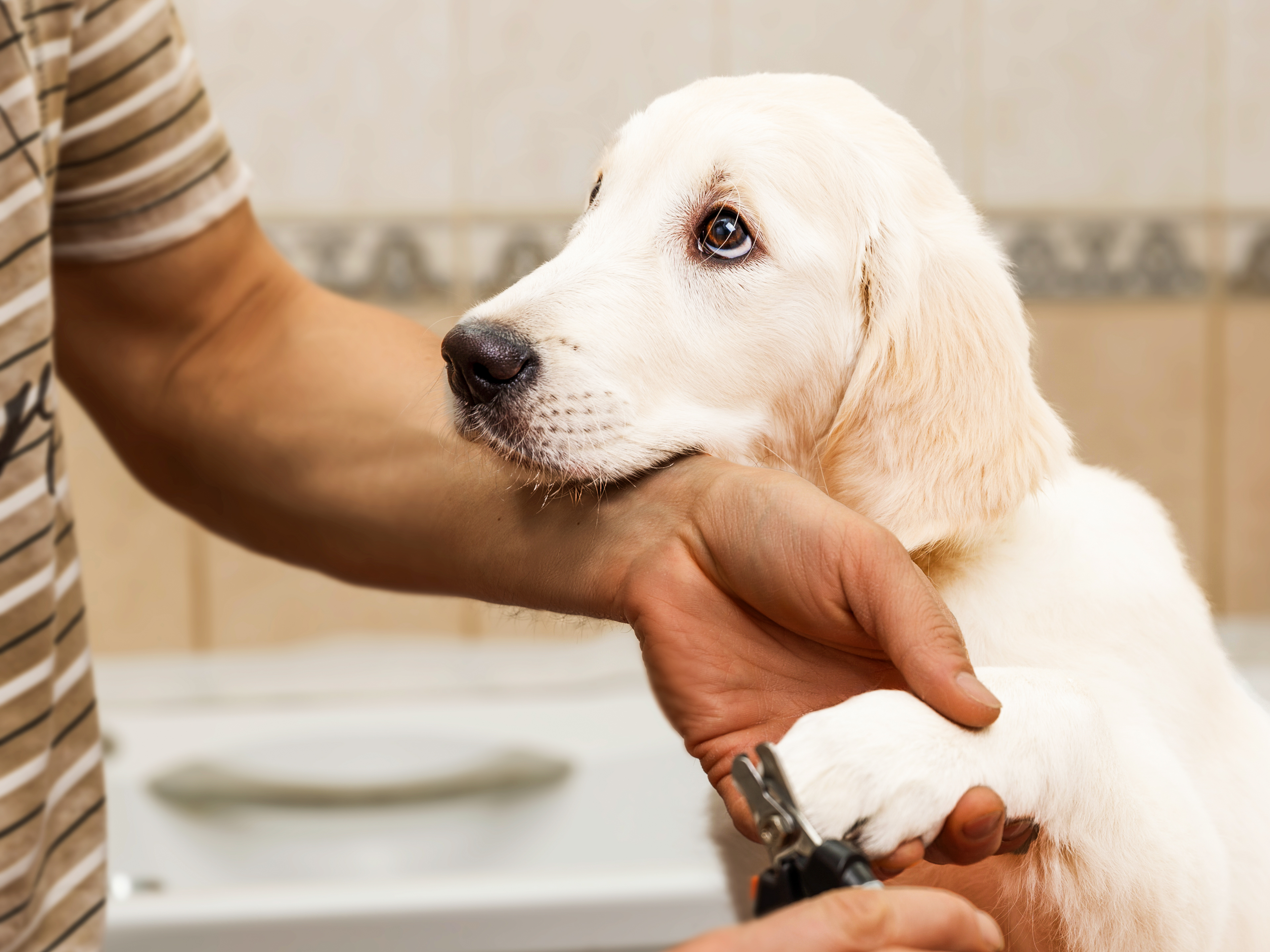
How to clip your puppy's nails
Your puppy's toenails should naturally wear down as they walk across hard surfaces, but if they grow too long you may need to clip them. Toenails should be trimmed carefully, as to avoid the blood vessels which exist in a puppy's nails. Trim the nail with specialist clippers, from the bottom up. This should preferably be done at 45 degree angle to the ground. The undercut should be smooth so that no cracks or cracks are formed on it.
If you are ever uncertain of when to trim your puppy's nails, or would like a demonstration, speak to your vet.

Our Puppy Ranges
Royal Canin puppy nutrition supports growth and development by providing all the nutrients essential to a their needs in the first year of life.